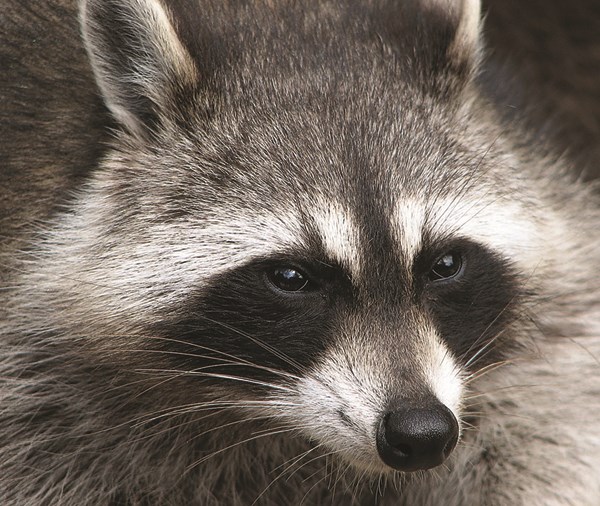
Brian Kearnan was heading out for a walk early this October when his dogs started barking and pulled him toward a tree behind his house. He looked up and was surprised to have his gaze met by the masked face of a raccoon. “I used to see them all the time back east where I’m from,” said Kearnan, who thought the sighting was so bizarre he notified Parks Canada Human Wildlife Conflict (HWC) Specialist Geoff Skinner.
Although Jasper National Park is outside the known range for raccoons, it wasn’t the first time a raccoon had been recorded in this area. Two years prior, one had been found dead on the railway tracks near a bridge over the Snaring River.
Two weeks after Skinner spoke to Kearnan, the HWC team began receiving more calls from residents in town. “People were finding berry-filled scats in their backyards and were concerned a bear was wandering around,” said Skinner.
The team investigated the reports, and, noting that the scat didn’t look bear-like, installed a remote camera in a yard where scat had been deposited. The camera caught the animal in action, confirming it was a raccoon. The team then set up a live-trap baited with sardines, and the next day found an adult female raccoon inside.
Raccoons? In Jasper?
Skinner suspects the two recent raccoon visitors hitched rides to Jasper National Park on the train. “The closest known populations are in the agricultural areas to the east of us in central Alberta.”
Given the range of problem-solving skills the species possesses, hopping a train isn’t a stretch. Raccoons have been observed using their crafty, hand-like paws to untie knots, unscrew jars and open doorknobs. They can undo complicated latches, memorize solutions to complex problems and break into a variety of man-made dwellings. Slinging themselves onto a railcar to access grain or corn would not pose a big challenge.
Unfortunately for this raccoon, travelling to a new place far from home had its hazards. “Once we captured her, we found that most of her tail and the lower part of her leg had recently been sliced off,” said Skinner. Given her poor physical condition, and the HWC team’s lack of knowledge of her place of origin, the team was forced to euthanize the raccoon.
“It’s always a concern when animals are transported to a new community far from their original home,” said Skinner. “They have the potential to disrupt the native species of their new home in a number of ways. For example, they can introduce new parasites and disease, or affect the relationship between native predators and their prey.”
There is speculation that the raccoon population in Alberta is expanding northward. An increase in food associated with agriculture and other human developments, and climate change, could be contributors. However, Skinner said he doesn’t expect raccoons to establish a population in Jasper National Park outside of the townsite. “Long, cold winters and a short growing season would likely limit a raccoon’s ability to gather enough food to survive in the park.”
However, he recognizes that raccoons are very successful at living in urban settings. They have incredibly varied diets and can easily adapt to living on human garbage in addition to the insects, fruit and seeds they are able to scavenge.
Living this close to people can create problems. Sometimes raccoons will den in buildings and destroy property. Skinner said some raccoons in Alberta carry canine distemper, which can be a lethal virus that can be spread to domestic dogs. Skinner also pointed to cases where raccoons have killed domestic cats.
Until better data is collected regarding the expansion of raccoon populations, the HWC team will continue to monitor the situation. In the meantime, if you see one of these fury little hobos travelling the rails or checking out your backyard, let park officials know.
Niki Wilson
Special to the Fitzhugh
